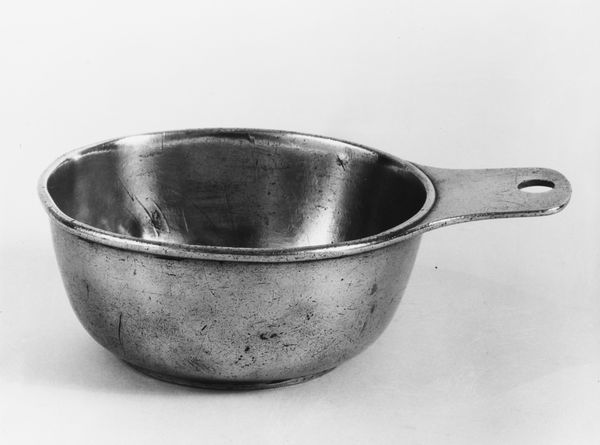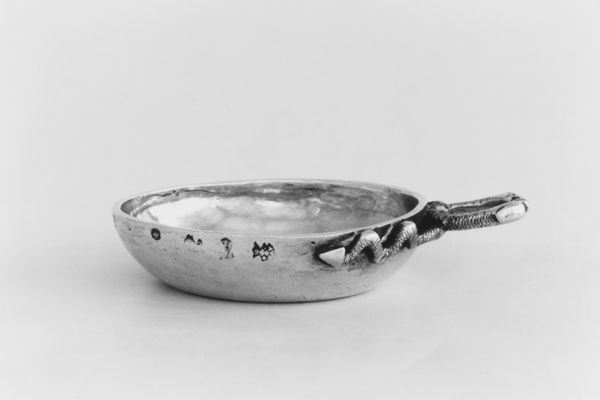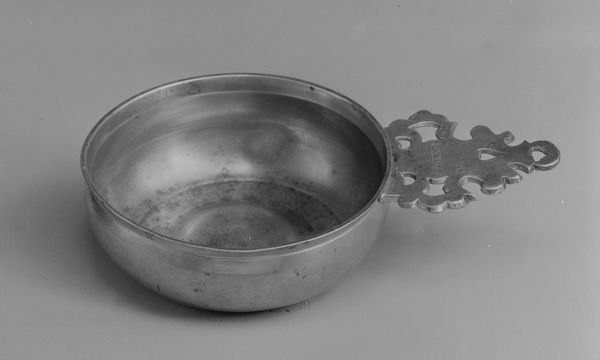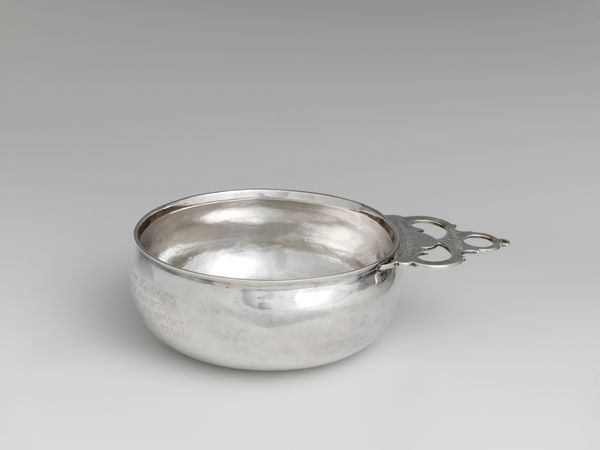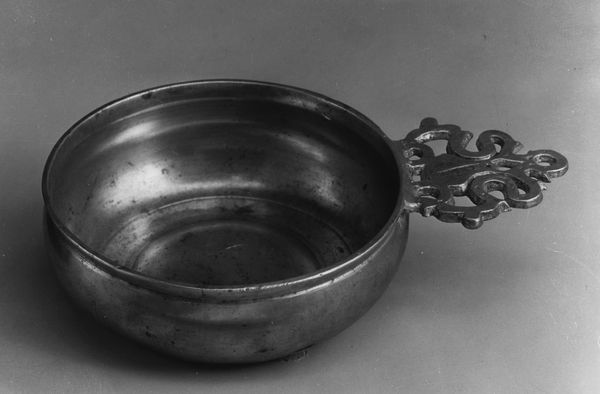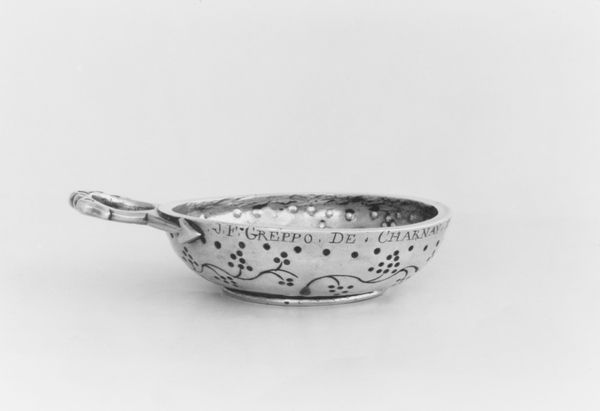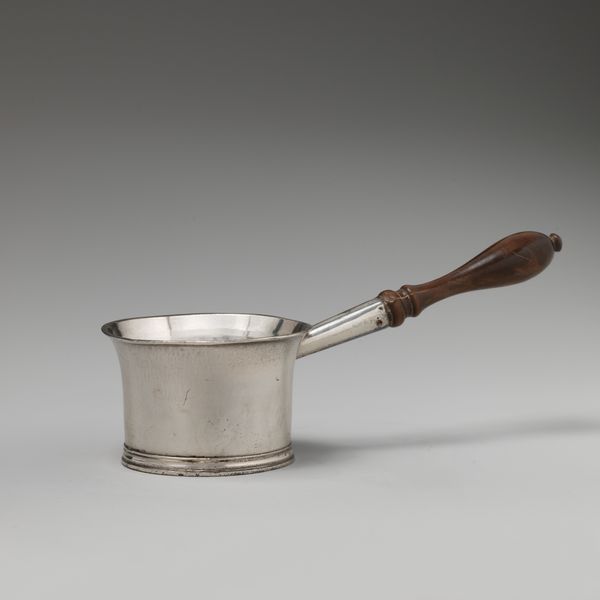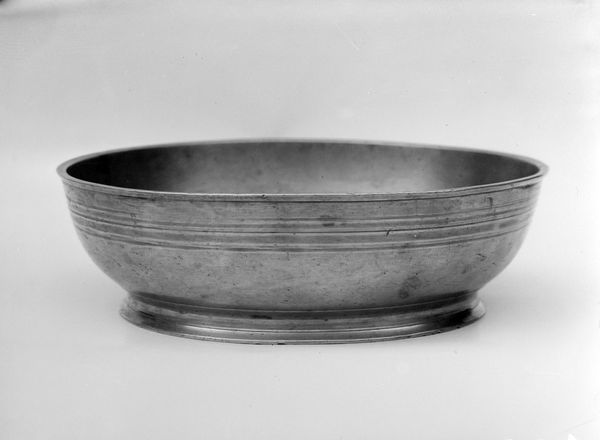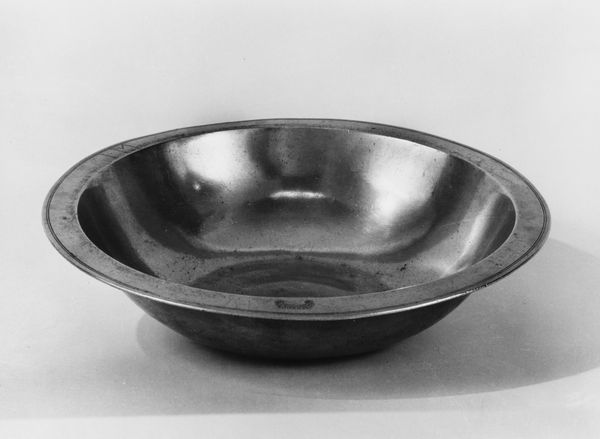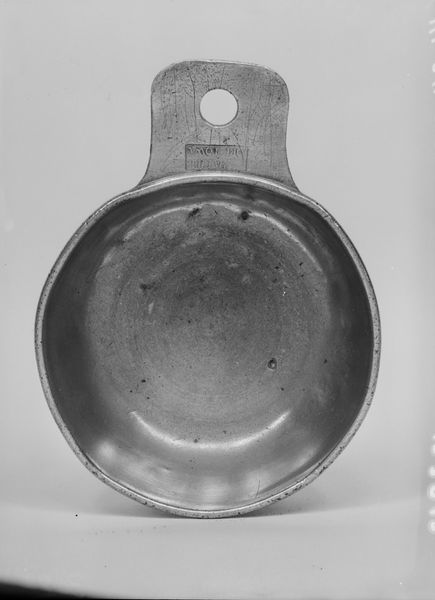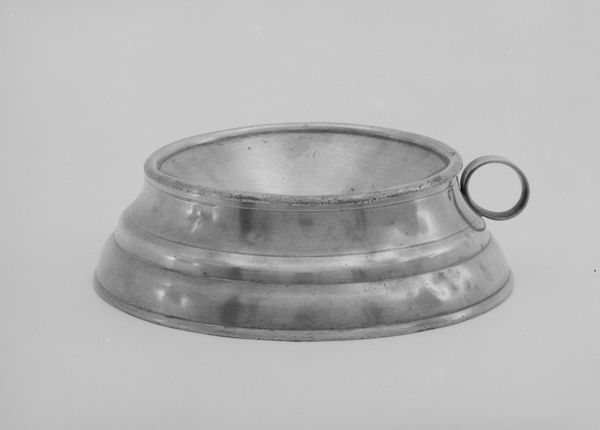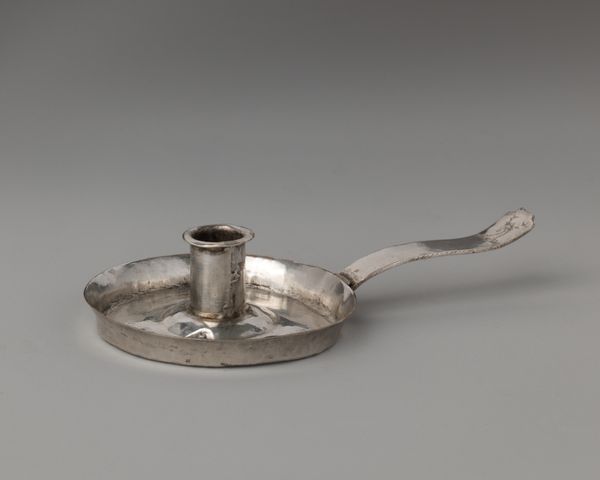
silver, metal, sculpture
#
silver
#
metal
#
sculpture
#
sculpture
#
united-states
Dimensions: 1 15/16 x 7 15/16 x 5 3/8 in. (4.9 x 20.2 x 13.7 cm)
Copyright: Public Domain
This porringer was created by Thomas Melville in late eighteenth-century America, most likely from hand-wrought silver or pewter. Notice its simple, functional form: a shallow bowl with a single, flat handle. The material itself speaks volumes. Silver and pewter were valuable commodities, reflecting the owner's status in a society where such wares signified wealth and taste. But it also represents the silversmith’s labor. Shaping the metal required skill, time, and specialized tools. The visible hammer marks and slight irregularities reveal the hand of the maker, a stark contrast to today's mass-produced goods. Melville’s craftsmanship connects this piece to a longer history of artisanal production, one where the maker's expertise was highly valued. This porringer isn't just a historical object; it's a testament to the value of craft, reminding us of a time when the process of making was as important as the object itself. It’s a reminder to look closely at the labor and social context embedded in everyday objects.
Comments
No comments
Be the first to comment and join the conversation on the ultimate creative platform.

